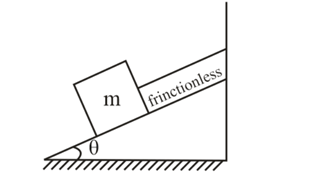Two horizontal forces and act on a disk that slides over frictionless ice, on which an x, y coordinate system is laid out. Force is in the positive direction of the x axis and has a magnitude of . Force has a magnitude of . The figure shown below gives the x component of the velocity of the disk as a function of time t during the sliding. What is the angle between the constant directions of forces and
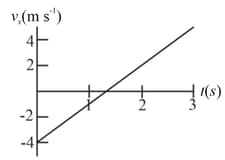


Important Questions on Force and Motion-I
Two particles of masses and are placed on a smooth horizontal table. A string, which joins these two masses, hangs over the edge supporting a pulley, which suspends a particle of mass , in figure shown below. The pulley has negligible mass. The two parts of the string on the table are parallel and perpendicular to the edge of the table. The hanging parts of the string are vertical. Find the acceleration of the particle of mass .
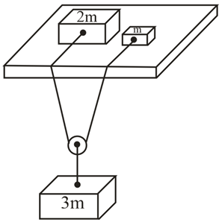
A salami is supported by a cord that runs to a spring scale, which is supported by a cord, hanging from the ceiling in the figure shown below. What is the reading on the scale, which is marked in the SI weight units? (This is a way to measure the weight by a deli owner.)
In the figure shown below, the salami is supported by a cord that runs around a pulley and to a scale. The opposite end of the scale is attached by a cord to a wall. What is the reading on the scale? (This is the way by a physics major.)
In the figure shown below, the wall has been replaced with a second salami, and the assembly is stationary. What is the reading on the scale? (This is the way by a deli owner who was once a physics major.)
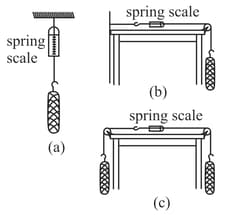
Some insects can walk below a thin rod (such as a twig) by hanging from it. Suppose that, such an insect has mass and hangs from a horizontal rod, as shown in the figure shown below, with angle . Its six legs are all under the same tension, and the leg sections nearest the body are horizontal.
(a) What is the ratio of the tension in each tibia (forepart of a leg) to the insect's weight?
(b) If the insect straightens out its legs somewhat, does the tension in each tibia increase, decrease, or stay the same?
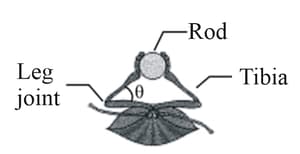
In the figure shown below, let the mass of the block be and angle be . Find
(a) the tension in the cord.
(b) the normal force acting on the block.
(c) If the cord is cut, find the magnitude of the resulting acceleration of the block.
